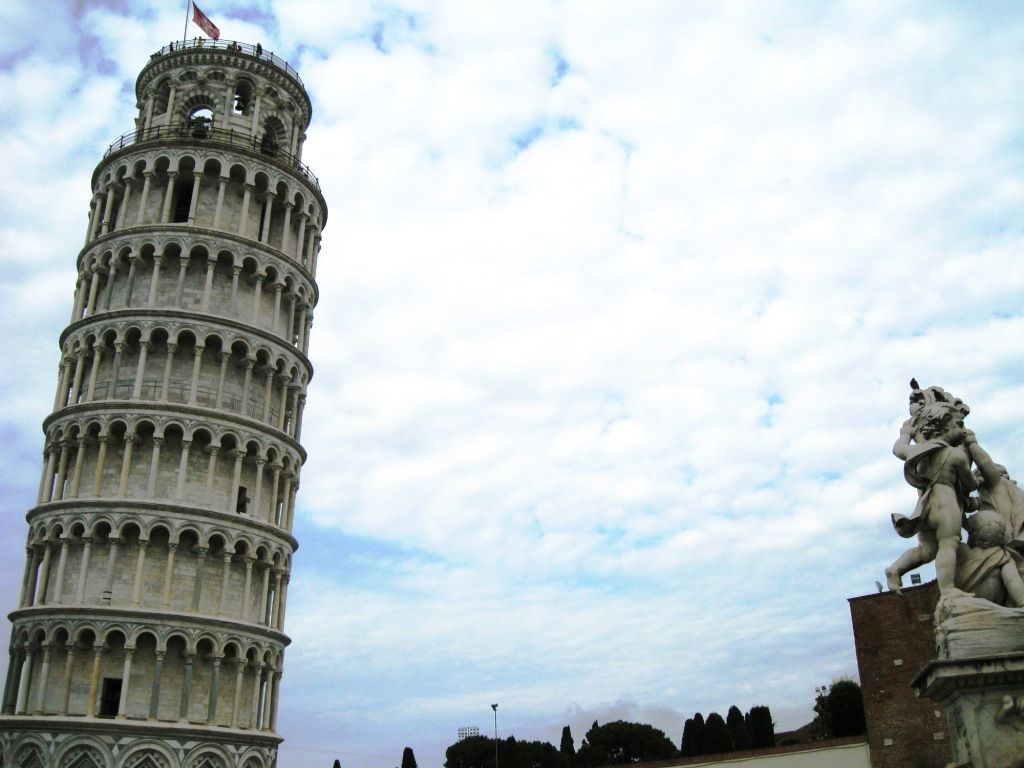博文
斜塔影下的科学与宗教
 精选
精选
|
在中国,比萨的名气比佛罗伦萨不知大多少,正如伽利略比拉斐尔有名得多。也许那应该归功于教科书。
比萨在佛罗伦萨西约200里(铁路距离是89km),幸好熟悉了意大利的铁路系统,还特别喜欢它自由的候车和乘车方式,所以到了佛罗伦萨放好行李就去看斜塔。
下了火车,沿罗马大道一直往北,跟着人多的路线走,准能到比萨塔下。
塔是白色的,在阳光下显得更加明亮。虽然史家考证伽利略并没从它的顶上往下落铁球,人们还是愿意相信有那个实验。虽然在今天看来那样的实验即使做了也不能打倒亚里士多德,但它怀疑了,实验了——这就是科学,新科学。
特有意味的是,比萨塔是比萨大教堂的一部分,堂皇的教堂就在它的旁边。不论伽利略是否做过落体实验,那个塔已经离不开他的名字了。而伽利略的妇孺皆知,也是因为他背离了宗教而且受到了宗教的审判——因为这一点,匹兹堡大学科学和哲学史家Peter Machamer在《剑桥哲学指南》(伽利略卷)里提出一个有趣的问题:人们为什么那么看重宗教审判?早些年布鲁诺被烧的时候,人们为什么没有那么关注?
Why did not the attention and public outcry that greeted Galileo emerge earlier, say with the burning of Giordano Bruno in 1600. One can argue that Bruno was not a scientist and was large ways toward being a crank, and so his situation compelled less interest. But this just begs the question: Why had science become so important to the people (at least to a large class of people, not even just the franchised, aristocratic class)?
是啊,为什么科学在那会儿变得重要了呢?因为“自觉”和“怀疑”:印刷图书开始流行,每个人可以在自己的家里读书;教学规范了,帕多瓦的同学可以和巴黎的同学听一样的课;每个人心中都有自己的上帝,教堂的权威消失了……(还有政治的、经济的诸多原因,我懒得总结了)于是,人们需要一种新的体系,那就是科学:
Thus in response to skepticism, and in line with the forces that recognized novelties and demanded a new system for certainty (intellectual security) and social stability, a democratic, individualistic, epistemology, and mechanical view of the world came to dominate Western thought. This new system of thought and practice was to be a new form of science (scientia), a new form of knowledge, and it was natural knowledge and dealt with the natures of things, including humans, in the world.
伽利略在比萨大学期间对运动问题极有兴趣,手稿里也提到过从高塔上扔下物体的实验。他的论证是,轻物体先落得快,但后来会被重物体超越。因为轻物体不能像重物体那样维持向上的惯性(conserve upward impetus)——换句话说,伽利略认为物体加速的原因在于有效重量的减小。这样看来,即使伽利略做了实验,结论也肯定是错误的。我倒是更欣赏他的另一个观点:数学本身是科学,也是考察自然奥秘的帮手。
躺在斜塔下的草地上,从不同角度看阳光下的塔顶和教堂的圆顶,分不清哪个是斜的哪个是正的——这似乎正写照了科学与宗教的关系。当科学以新的体系和思维取代宗教时,也伴生着新形式的宗教和宗教式的情感。没有宗教的科学和没有科学的宗教,是爱因斯坦说的瘸子,才是真正的“斜塔”……


游记
https://blog.sciencenet.cn/blog-279992-459863.html
上一篇:罗马问泉
下一篇:过帕多瓦天文台
全部作者的精选博文
- • 被拍卖的爱因斯坦方程
- • 彭罗斯的新物理狂想曲
- • 再说霍金彭罗斯
- • 彭老说黑洞
- • 314与137
- • 爱丽丝镜子里的时空奇点
全部作者的其他最新博文
- • 被拍卖的爱因斯坦方程
- • 彭罗斯的新物理狂想曲
- • 再说霍金彭罗斯
- • 永遇乐 辛丑元日还乡
- • 望海潮 元旦过锦江
- • 北京至成都过五城